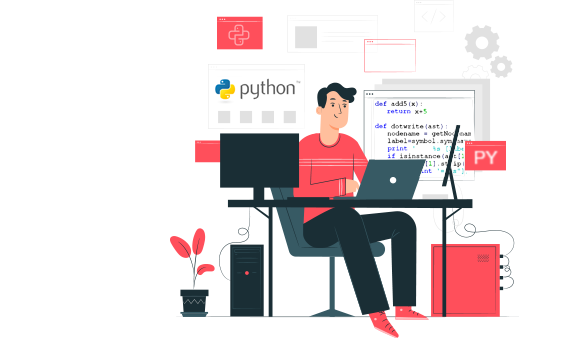Python Online Training is a simple process to complete. In this you can know perfectly that How Python supports the output of formatted strings. Well check out this page to know about the same….
Learning Python Training in Delhi classes is simple and can be found on any internet platform.
1. The Initiation of the Process
Python has the capability of producing formatted strings. The simplest straightforward application of this approach is to insert a value into a series by utilizing the string format character per cent s as the insert character.
2. The application of encoding
As a result of the entire expression, a string is returned. The variable k can be used to replace the first percentage s, and the variable v can be used to replace the second percentage s.
It is a tuple consisting of the following elements: (k, v). I mentioned that they could be beneficial in some instances. It’s possible that a simple string concatenation occurred to you as the basis for all of this effort. Contrary to popular belief, string formatting is more than just concatenating characters. Even worse, formatting isn’t the only problem. It’s also a form of conversion that has been imposed on the one doing the converting. Doing Python Training in Delhi is the first choice of the youngster.
3. Compared to string formatting, string concatenation is faster.
>>> By default, the uid is set to “sa.” pwd is an abbreviation meaning “secret.” It is not a good password for the “+ uid” command-line option (1). When it comes to sa, using the password secret is not a good idea. >>> per cent s isn’t a valid password for per cent s” is displayed on the screen (PWD, uid) (2) The password for sa should not be kept a secret >>> >>> 6 users are connected,
which are 6 per cent d (user count,) (3) (4) Users secured: 6 >>> “Users connected:” is represented as a percentage of the string “Users connected:” (5) Can you tell me where line 1 of the file “interactive input>” comes from? It is impossible to concatenate items of type “str” and “int.”
- + is the concatenation operator for string concatenation.
- When it comes to this basic example, concatenation is the same as string formatting.
- Three elements are contained in the tuple (3): III. A single piece (user Count). The syntax is a little weird, but it’s there to clarify that this is a tuple and not something else entirely. Although you can always place a comma after the last element in a list, tuple, or dictionary, you must insert a comma after the last part if you have one component of a tuple. Unless you include an exclamation point after (user Count), Python will not be able to distinguish between an array with only one entry and a valid value for the user count variable.
- Integers can be expressed as strings using the percent d symbol instead of the percent s character.
- If you attempt to concatenate two strings that are not strings, the compiler will throw an exception. There are many different ways to format Python strings. There are many different ways to format strings in C. With the help of this software. Other data types can be formatted in various ways using a variety of formatting characters and optional modifiers.
4. The presentation of values in a table.
percent “ percent “Today’s stock price is 50.4625 dollars.” (1)
50.462500
two-fifths of a percent 50.4625 m/s
50.46
“Difference from yesterday:.25% increase” should be printed on the receipt (3)
+1.50
The percent f format specifier option represents a decimal floating-point number in the decimal floating-point format. When precision is not given, six decimal places are printed by default when no precision is specified.
The precision modifier “.2” in the percent format specifier option will only print two decimal places if the precision modifier is used.
Aside from that, modifiers can be combined in any way you like. Positive and negative numbers are denoted by the plus sign (+) modifier. As seen, the “.2” precision modifier is still in its original position and is only utilized to print two decimal places when the precision modifier is set to “2.”
Python Training in Noida is available from several different institutions but you should enroll in the best after satisfying search.
